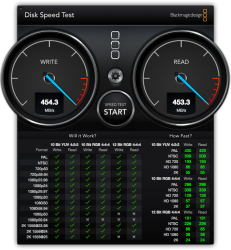Thunderbay 4 & IV R Different Animals
Thunderbay 4 or IV?
Is anyone running Windows / BootCamp with the ThunderBay IV?
I am having problems with Window crashes when the ThunderBay does something about 1 minute after Windows 8.1 loads in any of these system configurations:
1 - Window's in BootCamp on internal iMac SSD drive
2 - Window's on external Thunderbolt SSD
3 - Window's SSD mounted in one of the ThunderBay IV bays.
If the ThunderBay IV is turned off (except #3 above), there are NO problems with the Windows installation.
Thunderbay 4 or IV?


